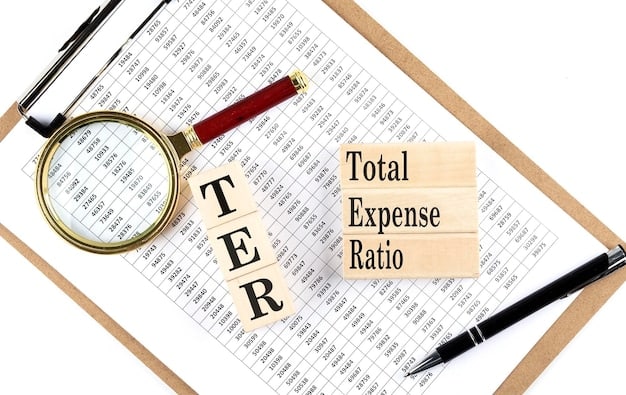Top 5 Homeowner Tax Credits You Can’t Miss in 2025

Don’t overlook these deductions: As a homeowner in the US, understanding and leveraging the top 5 tax credits—the Mortgage Interest Deduction, Property Tax Deduction, Home Improvement Tax Credits, Energy Efficiency Tax Credits, and the Residential Clean Energy Credit—can significantly reduce your tax burden in 2025.
As a homeowner, you’re likely aware of the financial responsibilities that come with owning property. But did you know that you could also be eligible for significant tax breaks? Don’t overlook these deductions: This article will explore the top 5 tax credits for homeowners in 2025, helping you save money and make the most of your investment.
Unlocking Tax Benefits: An Overview for Homeowners
Owning a home is a significant achievement, but it also comes with its share of expenses. Fortunately, the US tax code offers several opportunities for homeowners to reduce their tax liability through various credits and deductions. Understanding these benefits can help you plan your finances effectively and potentially save thousands of dollars each year.
In this article, we’ll delve into the top 5 tax credits that homeowners should be aware of in 2025. We’ll cover everything from mortgage interest deductions to energy-efficient home improvements, providing you with the knowledge you need to make informed decisions and maximize your tax savings.

The Power of the Mortgage Interest Deduction
One of the most significant tax benefits available to homeowners is the mortgage interest deduction. This deduction allows you to deduct the interest you pay on your mortgage loan, potentially leading to substantial tax savings. The amount you can deduct depends on the size of your mortgage and when you took out the loan.
Understanding the limitations and requirements of this deduction is crucial to ensure you’re taking full advantage of this valuable tax break.
Eligibility and Requirements
To be eligible for the mortgage interest deduction, you must meet certain requirements. Generally, you can deduct the interest you pay on a mortgage used to buy, build, or improve your home. The home must be your primary residence or a second home. There are also limits on the amount of mortgage debt for which you can deduct interest.
For example, if you took out a mortgage after December 15, 2017, you can generally deduct interest on mortgage debt up to $750,000 if married filing jointly or $375,000 if married filing separately. It’s important to keep accurate records of your mortgage interest payments, typically reported on Form 1098 from your mortgage lender.
Maximizing Your Deduction
To maximize your mortgage interest deduction, it’s essential to understand how it works in relation to your overall tax situation. Here are a few tips:
- Keep Accurate Records: Ensure you have all the necessary documentation, including Form 1098, showing the amount of mortgage interest you paid during the year.
- Understand Loan Limits: Be aware of the limits on deductible mortgage debt to ensure you’re not exceeding the allowable amount.
- Consult a Tax Professional: If you’re unsure about any aspect of the mortgage interest deduction, seek advice from a qualified tax advisor.
By understanding and following these guidelines, you can make the most of the mortgage interest deduction and reduce your tax burden.
In summary, the mortgage interest deduction is a powerful tool for homeowners, allowing them to deduct the interest paid on their mortgage loan. By meeting the eligibility requirements, understanding the limitations, and keeping accurate records, you can maximize this deduction and potentially save a significant amount on your taxes.
Property Tax Deduction: Lowering Your Tax Bill
Another valuable tax break for homeowners is the property tax deduction. Property taxes are a significant expense for many homeowners, but the good news is that you may be able to deduct a portion of these taxes from your federal income tax. This deduction can help lower your overall tax bill and ease the financial burden of homeownership.
Let’s explore the details of the property tax deduction and how you can take advantage of it.
Understanding the SALT Deduction
The property tax deduction is part of the State and Local Tax (SALT) deduction, which allows you to deduct the total amount of your state and local taxes, including property taxes, income taxes, and sales taxes. However, there’s a limit on the amount you can deduct. For 2025, the SALT deduction is capped at $10,000 per household.
This means that if your total state and local taxes exceed $10,000, you can only deduct up to that amount. It’s important to calculate your total SALT to determine how much of your property taxes you can deduct.

Strategies to Maximize Your Deduction
Even with the $10,000 limit on the SALT deduction, there are strategies you can use to maximize your property tax deduction:
- Calculate Your Total SALT: Add up all your state and local taxes, including property taxes, income taxes, and sales taxes, to determine your total SALT.
- Optimize Your Tax Strategy: Consider whether it makes more sense to deduct state income taxes or sales taxes, depending on which is higher.
- Consult a Tax Professional: A tax professional can help you optimize your SALT deduction and ensure you’re taking full advantage of any available tax breaks.
Remember that the property tax deduction is subject to certain rules and limitations. By understanding these rules and implementing effective strategies, you can potentially reduce your tax liability and save money.
To summarize, the property tax deduction allows homeowners to deduct a portion of their property taxes from their federal income tax. While the SALT deduction is capped at $10,000, there are still ways to maximize your deduction and lower your tax bill. Understanding the rules and consulting with a tax professional can help you make the most of this valuable tax break.
Home Improvement Tax Credits: Investing in Your Home and Saving on Taxes
Home improvements not only enhance your living space but can also lead to tax savings. Several tax credits are available for certain types of home improvements, particularly those that increase energy efficiency or provide other specific benefits. These credits can help offset the cost of renovations and make your home more valuable.
Let’s take a closer look at some of the home improvement tax credits you should consider in 2025.
Energy Efficiency Tax Credits
One of the most popular types of home improvement tax credits is the energy efficiency tax credit. These credits are designed to encourage homeowners to make energy-efficient upgrades to their homes, such as installing new windows, doors, insulation, or HVAC systems. The amount of the credit depends on the specific improvement and its energy efficiency rating.
Typically, these credits are claimed under the Energy Efficient Home Improvement Credit, which covers a percentage of the cost of qualified energy-efficient improvements. Keep in mind that there are often limits on the amount you can claim, so it’s essential to review the specific requirements and guidelines.
Residential Clean Energy Credit
Another significant tax credit for homeowners is the Residential Clean Energy Credit. This credit is available for investments in renewable energy systems, such as solar panels, solar water heaters, and geothermal heat pumps. The credit is typically a percentage of the cost of the system and can be claimed over several years.
- Solar Panels: Installing solar panels can significantly reduce your electricity bills and qualify you for the Residential Clean Energy Credit.
- Solar Water Heaters: These systems use solar energy to heat your water, reducing your reliance on traditional water heaters and saving you money.
- Geothermal Heat Pumps: Geothermal heat pumps use the earth’s natural heat to heat and cool your home, providing energy-efficient heating and cooling.
Home improvement tax credits can provide significant savings for homeowners who invest in energy-efficient upgrades and renewable energy systems. By understanding the available credits and meeting the requirements, you can reduce your tax liability and make your home more comfortable and sustainable.
In conclusion, home improvement tax credits offer a valuable opportunity for homeowners to save money while making upgrades to their homes. Whether you’re installing energy-efficient windows or investing in solar panels, these credits can help offset the cost of renovations and make your home more valuable. By staying informed and taking advantage of these tax breaks, you can enjoy the benefits of a more energy-efficient home while reducing your tax burden.
Energy Efficiency Tax Credits: Going Green and Saving Green
As homeowners become increasingly aware of the importance of sustainability, many are investing in energy-efficient upgrades to their homes. Fortunately, the US tax code provides incentives for these investments through energy efficiency tax credits. These credits can help offset the cost of making your home more energy-efficient and environmentally friendly.
Let’s explore the various energy efficiency tax credits available to homeowners in 2025.
Types of Energy-Efficient Improvements
Several types of energy-efficient improvements qualify for tax credits. These include:
- Insulation: Improving your home’s insulation can significantly reduce energy loss and lower your heating and cooling bills.
- Energy-Efficient Windows and Doors: Replacing old windows and doors with energy-efficient models can help prevent drafts and reduce energy consumption.
- High-Efficiency HVAC Systems: Upgrading to a high-efficiency heating, ventilation, and air conditioning (HVAC) system can save you money on energy costs and qualify you for a tax credit.
Claiming the Energy Efficiency Tax Credit
To claim the energy efficiency tax credit, you’ll need to keep detailed records of your expenses and the energy efficiency ratings of the products you purchase. You’ll also need to complete the appropriate tax forms and submit them with your tax return. It’s important to review the specific requirements and guidelines to ensure you’re eligible for the credit.
- Keep Detailed Records: Maintain accurate records of all expenses related to energy-efficient improvements, including receipts and product specifications.
- Complete the Appropriate Tax Forms: Fill out the necessary tax forms, such as Form 5695, to claim the energy efficiency tax credit.
- Review Eligibility Requirements: Ensure you meet all the requirements for the credit, including income limits and energy efficiency standards.
By investing in energy-efficient upgrades and taking advantage of energy efficiency tax credits, you can reduce your carbon footprint, save money on energy costs, and lower your tax bill. These credits are a win-win for homeowners who are committed to sustainability.
To summarize, energy efficiency tax credits provide incentives for homeowners to make their homes more energy-efficient. By investing in insulation, energy-efficient windows and doors, and high-efficiency HVAC systems, you can reduce your energy consumption and qualify for valuable tax credits. Understanding the available credits and meeting the requirements can help you save money while making your home more environmentally friendly.
Residential Clean Energy Credit: Powering Your Home with Renewables
As the world shifts towards renewable energy sources, many homeowners are exploring options like solar panels, solar water heaters, and geothermal heat pumps to power their homes. The Residential Clean Energy Credit offers a significant tax incentive for these investments, making it easier and more affordable to go green.
Let’s delve into the details of the Residential Clean Energy Credit and how you can benefit from it.
Investing in Renewable Energy Systems
The Residential Clean Energy Credit is available for investments in various renewable energy systems, including:
- Solar Panels: Installing solar panels can significantly reduce your electricity bills and offer tax credits.
- Solar Water Heaters: These systems use solar energy to heat your water, reducing your reliance on traditional water heaters.
- Geothermal Heat Pumps: Geothermal heat pumps tap into the earth’s natural heat to heat and cool your home.
Maximizing Your Credit
To maximize your Residential Clean Energy Credit, consider the following tips:
- Plan Your Investment Carefully: Research the different renewable energy systems and choose the one that best fits your needs and budget.
- Work with Qualified Installers: Hire experienced and certified installers to ensure your system is installed correctly and meets all the requirements for the credit.
- Keep Detailed Records: Maintain accurate records of all expenses related to the installation of your renewable energy system.
By investing in renewable energy systems and taking advantage of the Residential Clean Energy Credit, you can reduce your reliance on fossil fuels, lower your energy bills, and contribute to a cleaner environment. These credits are a smart investment in your home and the planet.
In summary, the Residential Clean Energy Credit provides a valuable tax incentive for homeowners who invest in renewable energy systems. Whether you’re installing solar panels or geothermal heat pumps, this credit can help make these investments more affordable and accessible. By carefully planning your investment, working with qualified installers, and keeping detailed records, you can maximize your credit and enjoy the benefits of renewable energy for years to come.
| Key Point | Brief Description |
|---|---|
| 🏠 Mortgage Interest Deduction | Deduct interest paid on your mortgage (up to certain limits). |
| 💰 Property Tax Deduction | Part of SALT deduction, capped at $10,000 per household. |
| 💡 Energy Efficiency Credits | Credits for improvements like insulation, windows, and HVAC systems. |
| ☀️ Clean Energy Credit | For solar panels, water heaters, and geothermal heat pumps. |
Frequently Asked Questions
▼
The mortgage interest deduction allows homeowners to deduct the interest they pay on their mortgage loan, reducing their taxable income. This is typically for loans used to buy, build, or improve their primary or second home.
▼
The State and Local Tax (SALT) deduction, which includes property taxes, is capped at $10,000 per household. This limit affects the amount of property taxes you can deduct from your federal income tax.
▼
Qualifying energy-efficient improvements include insulation, energy-efficient windows and doors, and high-efficiency HVAC systems. These improvements help reduce energy consumption and can lead to tax savings.
▼
The Residential Clean Energy Credit is for investments in renewable energy systems like solar panels, solar water heaters, and geothermal heat pumps. It provides a tax incentive for homeowners to adopt clean energy solutions.
▼
Maximize credits by keeping detailed records of expenses, optimizing your tax strategy, and consulting a tax professional. Careful planning and documentation are key to claiming the full amount you’re entitled to.
Conclusion
Navigating the world of homeowner tax credits can seem daunting, but understanding these deductions is a powerful tool for financial savings. By taking advantage of the mortgage interest deduction, property tax deduction, home improvement tax credits, energy efficiency tax credits, and the Residential Clean Energy Credit, you can significantly reduce your tax burden and make the most of your homeownership investment in 2025.





